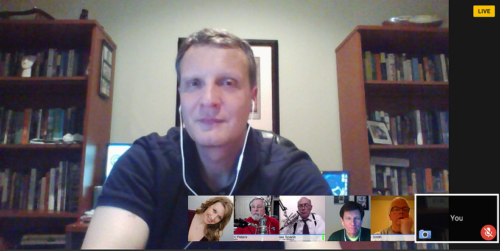This post is from a few years ago, but it is no less relevant today. Particularly with uncertainty and volatility across the commodity complex.
Weather Brains discussion – Agriculture Commodities
While I have been a long time listener of the show, last night I participated as a guest in my first Weather Brains hangout. Weather Brains is a weekly podcast that is pure weather geekery, with no agenda other than the open-ended questions geared towards the interests of the invited guests. I try to listen every week, either on the live broadcast or through the archives as shows are posted for viewing shortly thereafter. If you are not truly a weather geek there is no reason to tune in, but as weather is a subject that touches everyone in a unique way, the interest in the weekly discussion is generally pretty high. Recent episodes have addressed a wide variety of topics including (of course) the recent extreme cold and ice in the US, model scoring, a discussion from past AMS president Dr. Marshall Shepherd, and aviation/transportation weather, among other subjects. For last night’s discussion, I tried to focus most of my contributions around the close relationship at the confluence of weather/climate, agriculture and global commercial activity.
The conversation touched upon some of the tools and recommendations that aWhere develops and provides to our customers in the global agriculture sector, how I became interested in this field including my graduate work at Rutgers, and ways in which companies in the food and beverage sector (including organizations such as Mars and Coke) utilize weather and climate information as a source of competitive advantage. Throughout the chat, we touched upon the general state of the weather and climate services enterprise several times, which I described as healthy. From the number of companies that have emerged in the agritech and weather information services space to the amount of investment capital that has entered this sector over the last 1-2 years, I feel that the current position of our field is quite strong. In addition, the conversation allowed for my perspectives of climate science as data science, and specific financial instruments that commodity risk managers can access and utilize towards efforts to manage price volatility as a result of weather-driven markets. Most people understand the relationship between weather/climate and agriculture on the surface, but many don’t dig deeper to uncover how valuable it is when using our data as a cornerstone in fundamental analysis of global commerce. This goes beyond what is happening the field, as the analysis expands into topics such as plant disease, nutritional requirements, water stress, foreign exchange rates and geopolitics. The use of financial futures and options as tools to manage the risk is available to a wider sector of participants than just the traders, and should be used accordingly.
I think that I was able to provide a slightly different perspective for viewers and listeners. This discussion was more about ‘applied weather intelligence, as opposed to weather forecasting, and this is a good thing. The applied wx intelligence arena is the space where aWhere plays, so we are well positioned to provide new tools to the commodity risk management community, which includes traditional traders, but also encapsulates small farmers, food security analysts, food and beverage companies, and information service providers. Not everyone in the sciences of climate and meteorology go into forecasting or basic research, and I think that I highlighted just one of many alternatives that students should be aware of. As weather and climate touch virtually every aspect of society in some way, the options for the next generation of scientists are far wider than what we may have seen in the past.
It was fun participating in the discussion (video below), and I would be happy to become a ‘repeat guest’ in a future episode. And thanks to the always-entertaining James Spann (@spann) for hosting, in between real-time forecast activities.

